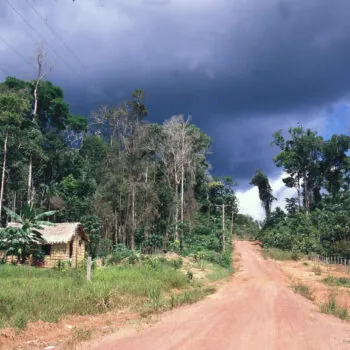With just weeks left before the key UN climate meeting in Copenhagen the EU has a critical role to play in helping build momentum towards a new global agreement.
In a new briefing environmental think-tank E3G argues that the EU should raise its unilateral emissions reduction target to 30% below 1990 levels by 2020, and should table a conditional offer of a 40% reduction in the event of a fair, ambitious and binding international agreem
"Moving to 30-40% reductions is in the EU’s domestic interest,”
said Nick Mabey, Chief Executive and Founding Director of E3G.
"This would boost confidence in the international carbon market and incentivise the investment needed to drive transformational change in the power, industry and transportation sectors. But above all, announcing such a shift at this crucial moment in the climate negotiations would restore political momentum to a process that is stalling badly for lack of leadership.”
Key conclusions from the briefing:
- The world has changed significantly since the EU first adopted its 20-30% negotiating position in 2007. As a result of the recession, the cost of achieving a 30% target is now estimated to be €104bn cheaper than the original 20% reduction was expected to be when first adopted.
- The most recent macro-economic analysis suggests that the EU could achieve 30% at a cost of a fraction of a percent of GDP, or possibly even while adding to GDP growth. According to one study the EU could meet a 30% target at a cost of 0.13-0.17% of GDP even without the use of offsets.
- Recent IEA analysis shows that, given the use offsets and surplus allowances banked from Phase 2 of the Emissions Trading Scheme, the EU will be able to meet its current 20% target without any additional domestic abatement taking place. This would undermine the integrity of the ETS.
- A higher carbon price brought on by a stronger target would be good for Europe’s overall competitiveness, helping to drive investment in the low carbon industries of the future. Research by the French think tank iDDRi (International Institute for Sustainable Development and International Relations) suggests that a carbon constraint will actually lead to increased demand for heavy materials and that the steel, cement, aluminium and glass industries can prosper if they adapt early to the low carbon economy. Heavy industry has been a net seller of allowances during the initial phases of the ETS and could see additional windfall profits of up to €5.4bn by the end of Phase 2.
- The projected fall in the carbon price as a result of the recession also implies reduced auction revenue for governments from 2013 to 2020. In its impact assessment for the 2020 Climate Package, the European Commission predicted that a carbon price of €39/tonne and 50 percent auctioning would result in auction revenue of around €38bn by 2020. Many forecasts now put the price in 2020 at closer to €20/tonne, meaning auction revenues would be cut in half.


